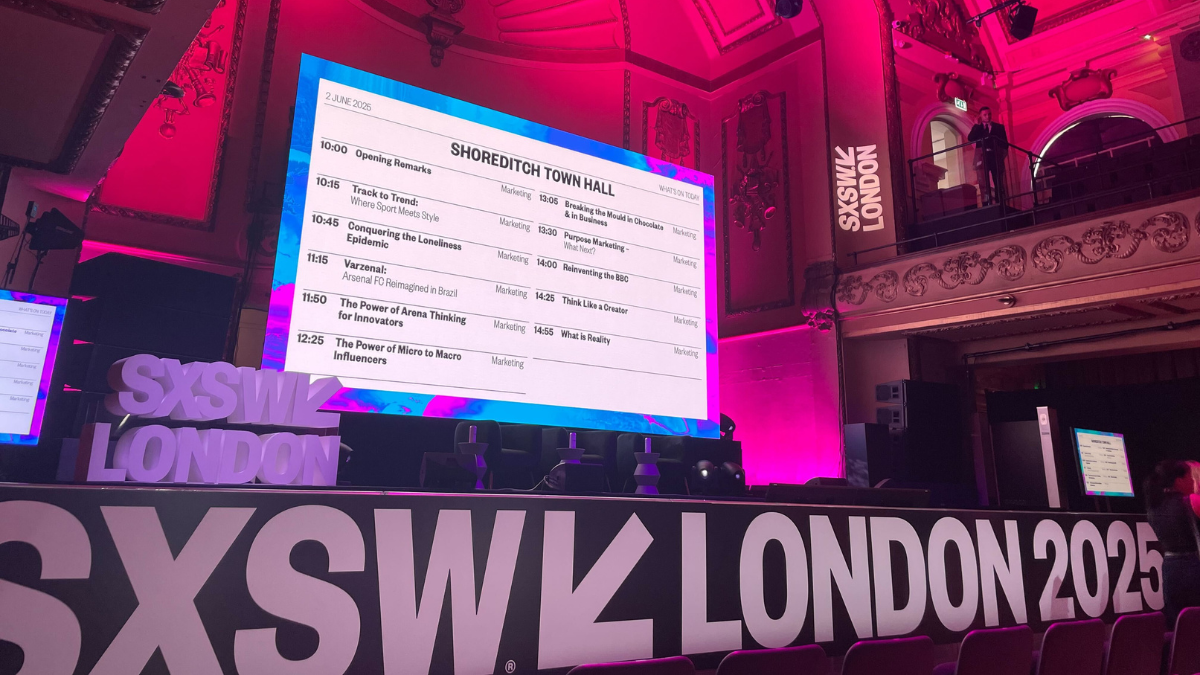In February, Geoff Chang, creative lead at eight&four, told us that SXSW London had ‘big boots to fill’, given its success in the US.
The consensus on the ground this week was that there were more hiccups than anticipated, but that the conference has potential.
The event sparked controversy from day one, following the surprise appearances of former PMs Tony Blair and David Cameron. Multiple artists, including Sam Akpro, Rat Party, Saliah, Jasmine.4.T, and LVRA pulled out of the festival after a leaked document featuring the names of the guest speakers surfaced on X. The artists accused SXSW of ‘artwashing’ and urged people to boycott the event.
But artists were not the only ones who felt disappointed by the event organisers. Attendees, some of whom had spent £1,300 for a Platinum Pass, voiced their dissatisfaction with the lengthy queues and the SXSW London app.
‘As a Platinum Pass holder, I do feel there should have been better organisation and management of entry to high-demand sessions,’ said Lucy McKillop, global brand director at Carat.
Between sessions, attendees were forced to empty the room, walk out of (and around) the venue, queue up for security once more and then join a second queue to re-enter.
Sue Daun, executive creative director at Interbrand, said that the ‘tight turnaround times meant many people missed the start of the next talk’. It also meant that high-profile speakers were sometimes walking into half-empty rooms.
‘While the speaker lineup was strong and the thematic curation at venues worked well, the dispersed Shoreditch setting made it difficult to get between talks — and even harder to get into them, thanks to long queues and limited capacity,’ Daun said.
She added that the organisers missed a great ‘opportunity to keep queuing audiences engaged’ because, although many of the venues had courtyards, not all of them showed live-streams of the ongoing sessions.
Attendees also complained about the event’s app, with some taking to social media to express their confusion. Ben Logan, former managing director of Spotless agency, said on LinkedIn that it felt like the app ‘wasn’t really tested that much with real people’.
Daun also said that ‘for a tech-focused event, the app was surprisingly underwhelming’. She added that ‘a visual planner that accounted for timing overlaps and walking distances would’ve gone a long way.’
Aside from the confusing app and the lengthy queues, attendees mostly said that they felt overwhelmed by the number of sessions. Considering the size of the event, there was also a relatively small number of vendors, with just a handful from the marketing industry.
We spoke to Jane McNeill, COO at IAB UK (who had a stand in the Truman Brewery), and she agreed with the general sentiment that the event felt ‘overwhelming’. She also noted that there was less of a focus on digital advertising than she’d expected.
McKillop, however, disagreed but did note that ‘sometimes, the best sessions about digital did not have it obviously listed in the title’.
Despite the above complaints, most attendees still believe that SXSW can be a success in London.
‘Overall, I think the festival reflects humanity at the moment — a bit of tech, a bit of music, a bit of wellness, film, art and culture… lots of confusion and ultimately made better by spending time in real life with humans. Sure, it can be improved on as it gets more mature, but I don’t think it’s a bad start,’ McKillop said.
Similarly, Daun said that ‘teething issues are expected for a first edition’ but that ‘with a few operational tweaks, it has strong potential to become a mainstay on the UK events circuits’.
‘The potential is huge,’ she said.

